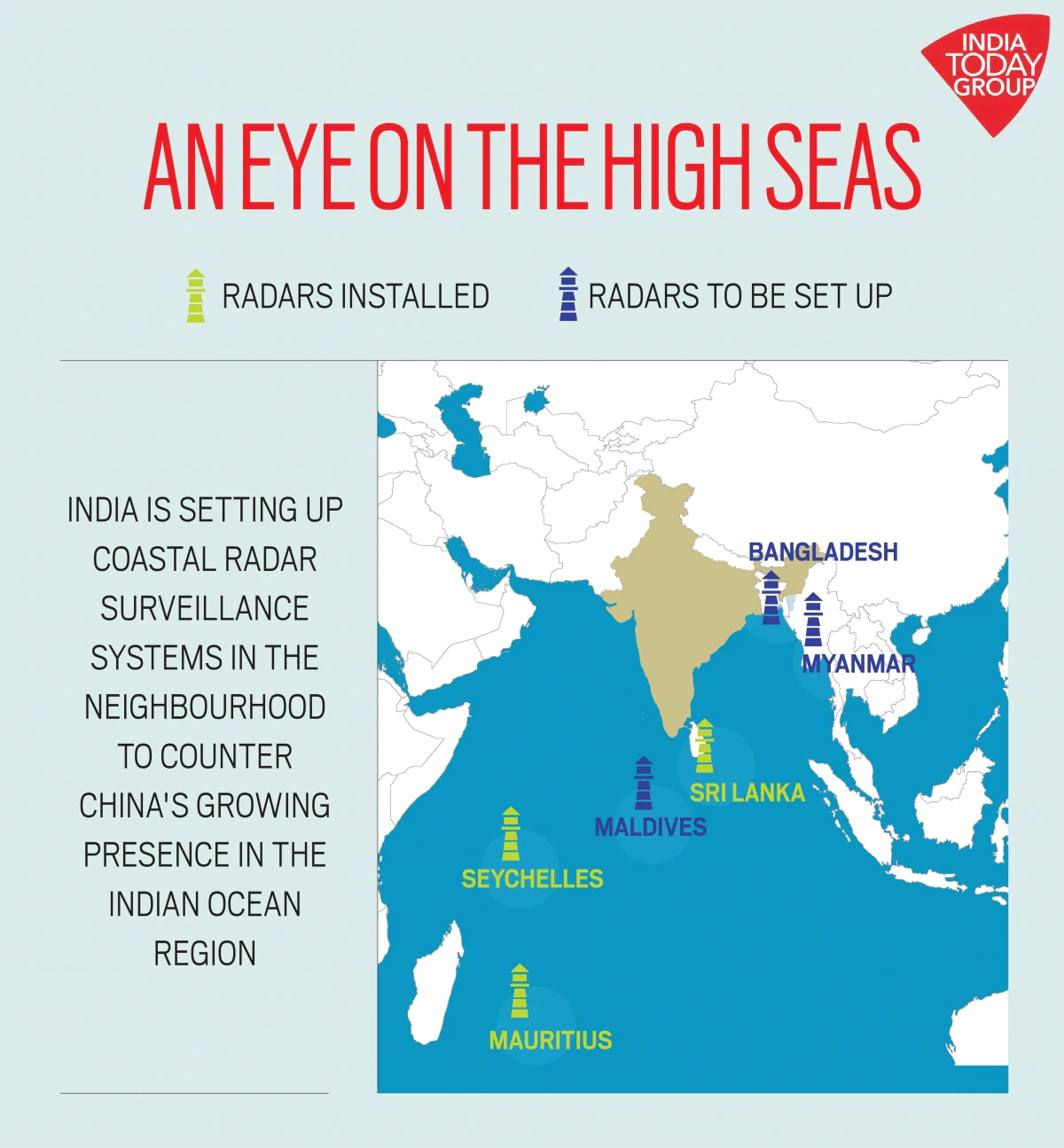
SOURCE: INDIA TODAY
Looking to counter China’s influence and increasing presence in the Indian Ocean Region (IOR), India is setting up coastal surveillance radar systems in the neighbourhood as part of its policy to enhance military diplomacy that will also lead to increased security measures in these friendly countries.
While the radars meant for maritime surveillance have already been installed in Sri Lanka, Mauritius and Seychelles, these will be very soon set up in Maldives, Myanmar and Bangladesh, sources in the security establishment said.
“Similar projects are under proposal for Maldives and Myanmar while Bangladesh is at an advanced stage and at least 12 other countries are perceived for a similar requirement,” said an official privy to the detail.
The Coastal Surveillance Radar system is capable of detecting small boats, fishing vessels, ships and monitors any illegal activities in the sea.
India has been looking to enhance assistance to friendly countries in the neighbourhood as China’s influence is on the rise in the India Ocean Region. Recently, India handed over INS Sindhuvir to Myanmar, making it the first submarine in its naval fleet.
India has also constructed the Sitwe port in Myanmar as part of the Kaladan transport project. The transit project will connect Kolkata to Sitwe port in Myanmar and finally end up linking Mizoram. This will be a new gateway to the landlocked North-East, reducing the distance from Kolkata to Mizoram by nearly a thousand kilometres and the travel time by at least four days.
China has also been carrying out development projects at Kyaukpyu port near Sitwe.
The assistance to these countries comes under India’s programme called SAGAR, Security and Growth for All in the Region, and New Delhi is committed to build self-reliant capabilities in the neighbourhood.
China’s increasing forays in Indian Ocean Region
There has been a steady rise in the deployment of Chinese research vessels in the Indian Ocean Region (IOR), recent trends show. This has been spotted in the south-eastern and western parts of the Indian Ocean over the last few years.
A sharp rise in Chinese fishing vessels in the IOR in the last four years has also been observed. On an average, there were 300 Chinese fishing vessels that sailed the IOR every year but the number went up to 450 last year, sources said.
Around 100 vessels have been sailing from China to Pakistan but there has been no “discernable pattern” found, officials said.
Increasing presence of China in the India Ocean Region has been a strategic concern for India.
The Chinese Navy vessels, including their submarines, frequent the water on the pretext of anti-piracy operations, intelligence reports suggest.
China has been expanding its naval operations in the Indian Ocean Region and the Indian Navy is aware of its growing maritime prowess. They have been shifting a lot of resources from other arms to the Navy, keeping in line with their aim of becoming a global power.
In September last year, a Chinese vessel close to the Indian waters was asked to go back after it was suspected to be on a spying mission.
Indian Navy’s growing international outreach
The Indian Ocean Region accounts for 75 per cent of the world’s maritime trade and 50 per cent of global consumption passes through it, prompting security measures involving multiple countries.
At any given time, there are close to 12,000 ships in the Indian Ocean Region and 300 fishing vessels that need to be always monitored. There are close to 3 lakh Indian fishing vessels operating in the seas.
The Indian Navy is able to get real-time information through its Information Fusion Centre-Indian Ocean Region. An association with 22 countries, including Australia, France, Italy, Japan, Maldives, the USA, New Zealand, Mauritius, Myanmar and Bangladesh, along with 22 multi-national agencies, allows in quick sharing of information in the Indian Ocean Region.
The International Fusion Centre was started in December 2018, facilitating maritime information to the member countries. The Indian Navy has got the go-ahead to have white shipping agreements with 36 countries; of which 22 have been signed them and 17 are operationalised, sources said.
Recently, the four-nation Malabar Exercise involving India, Australia, the USA and Japan was concluded and hosted in two phases by the Indian Navy in the Bay of Bengal and Arabian Sea.






